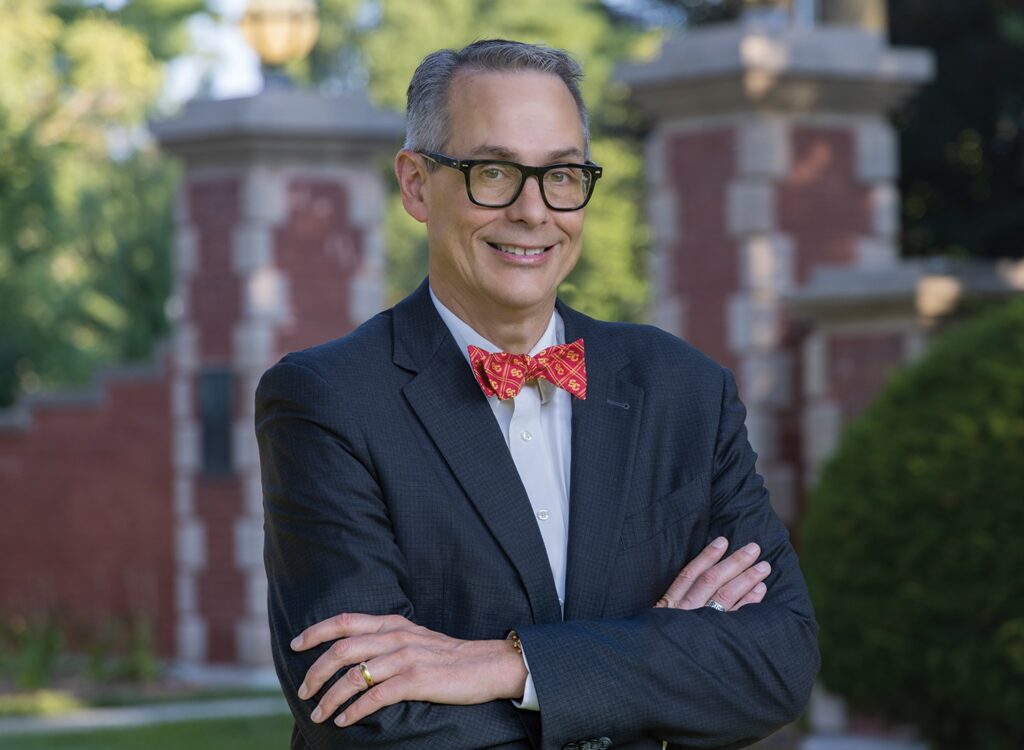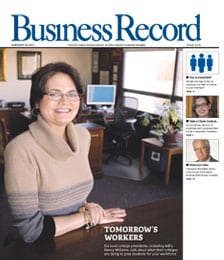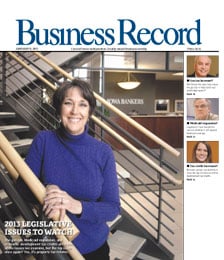For an Iowa biotech success story, see Harry Stine

Harry Stine figures it might take a while for the world to completely accept genetically modified organisms, such as the soybeans he develops and sells. After all, he said, the Roman Catholic Church waited 400 years to apologize for imprisoning Galileo.
“It will change; I don’t know when,” said Stine. “Common sense and logic usually win out in the end.”
A global businessman who says he doesn’t get off the farm very often, he runs Stine Seed Co. from the family farm northwest of Dallas Center. Stine’s father moved there to rent 180 acres in 1934 – and proceeded to harvest eight bushels from a 40-acre cornfield during that horrendous drought year.
The family fortunes have brightened considerably since then. In recent years, the 63-year-old Stine has donated $1 million to help build a science center at Buena Vista University in Storm Lake; spent more than $1 million on Christmas bonuses for his employees in 2003; and recently announced that he will give $2 million to the Future Farmers of America Enrichment Center in Ankeny.
He can do such things because he has developed Stine Seed into one of just a handful of important players in the GMO field, competing from its Dallas County headquarters against giant corporations such as Monsanto Co. and Switzerland-based Syngenta AG. The major part of the company’s business is selling germplasm – hereditary material – and Stine Seed claims that more than half of the soybeans planted in the Midwest include its genetics.
Of course, Harry Stine hasn’t done it alone, but he has proved himself to be an unstoppable force.
“He’s a Jeffersonian type,” said Steven Zumbach, an attorney and partner at the Belin Lamson McCormick Zumbach Flynn law firm. “He has many skills, he likes doing things for himself, and he has the ability to do them.”
The Belin firm now does legal work for Stine, but Zumbach remains impressed by the way Stine started the process of protecting his intellectual property all by himself. “Harry was one of the first to recognize the potential of protecting rights to germplasm,” Zumbach said. “The first licensing work, Harry did himself, and there weren’t any road maps to follow. That initial work has withstood challenges from significant and substantial litigation by major law firms.”
The creation of intellectual property isn’t just a historical relic at Stine Seed, but an ongoing process. In April, the company received a patent on a process for using air pressure to place DNA into plant tissue. This method overcomes some of the limitations faced by traditional means of injecting DNA, according to Stine. “With this, we can inject anything, including enzymes,” he said.
Though he’s willing to describe that specific advance, Stine is mostly cagey about his company’s plans. Research continues along the expected lines, centered on soybeans and corn, and aimed at improving resistance to herbicides, insecticides, disease, drought and stress. Tests are run in various parts of the nation and the world, and the results are studied at the company headquarters. If he has a specific goal for the company’s size or prominence, he’s not talking about it. We’ll just keep doing what we do, he said, and the company will continue to grow.
“Herbicide and insecticide resistance are bigger-ticket items than the others,” Stine said. “There’s not as big a profit margin in the secondary problems.”
Asked about Asian soybean rust, which is creating concern among farmers all over the United States, Stine said, “Rust is not at the top of our list,” and wouldn’t elaborate.
Although he has always lived a short drive from Iowa State University’s agricultural research facilities, Stine has little connection with the scientists there or at any other university. “We’re not working much with universities, and university research is generally not a big factor” in his company’s specialty, he said. However, he said, “a lot of the time universities are working on things that are not economically viable, and that’s good, because private interests wouldn’t work on it.”
And though there’s a push in Iowa to make the state a biotechnology center and Stine is a shining example of how valuable biotech can be in the hands of the right entrepreneur, he showed little interest in that initiative.
“With the way data transfer works today, we don’t care where anything is located,” he said. “We are not certain that (the state’s search for biotech start-ups) is the best use of resources. We do think it’s important to create the right climate with a tax structure that’s friendly to entrepreneurs” and reasonable regulations.
“It’s not how many turkeys and pheasants you release that’s important,” Stine said. “It’s the climate you release them into.”
The social and economic climate of Central Iowa has been a key to his success, in Stine’s estimation. “Agriculture began in the Middle East 8,000 or 10,000 years ago; we’ve had agriculture in Dallas County for 150 years,” he said. “Explain to me how you can totally pass by the whole world in agricultural efficiency. People say it’s because we have great land, but there’s great land in other spots.”
Stine’s list of American advantages is:
Law and order. “That’s number one,” he said.
The protection of intellectual property.
The rapid adoption of new technology.
The capitalistic economic system.
The genetics of the population. “It’s the aggressive, entrepreneurial, progressive ones who came to this country,” he said.
By way of comparison, Stine said he has offered equipment and technology to developing countries at no cost but has yet to receive a response. “The government entities are thinking about it,” he said. They’ve been thinking for a year.
Stine’s obsessive interest in ag research and his populist approach somewhat echo the life history of another Central Iowan, Henry A. Wallace, founder of Pioneer Hi-Bred International Inc. and vice president of the United States during Franklin D. Roosevelt’s third term.
Stine never met Wallace – although he remembers Wallace’s son buying chickens from Stine’s father – but said, “I have great respect for Henry Wallace and certain philosophical approaches he took.”
Citing a story about Wallace refusing to accept the conventional wisdom about which ears of corn made the best seed stock, Stine said, “Being skeptical and finding out by doing – we love that part of his logic and approach to problems.”
Or, as he quotes his “favorite scientist,” French chemist Antoine Lavoisier: “Man’s mind was not made to reason by probability.”
Stine employs about 20 people on his farm and at a research facility in Ames. Add the people who work at plant breeding sites and the total is about 150, he said.
“Look out that window and compare my inventory with what you would see at Monsanto in St. Louis,” he said, and joked, “I tell them all the time there’s no way they can compete with us.”
Resistance to GMOs seems to be dissipating. Joseph Saluri, vice president of business development for Stine Seed, said Spain has approved the use of Bt corn and Roundup-ready soybeans. Other countries, including major soybean producer Brazil, also have approved herbicide-resistant beans.
“Biotech is probably more important in developing countries than in the U.S. in terms of increasing food production,” Stine said. Of those who continue to oppose planting of biotech crops, he said, “You would think ‘green’ groups would demand biotech rather than continuing the use of dangerous chemicals. It’s so sad. It’s mind-boggling.”
Stine was getting ready to fly to the Republic of Guyana, one of 63 countries he has visited over the years. He would make the trip in the company’s private jet, then return after a day or two. He’s already seen the countryside there, he said, so there’s no reason to linger.
What would he do while he was there?
“Plant corn,” he said.







